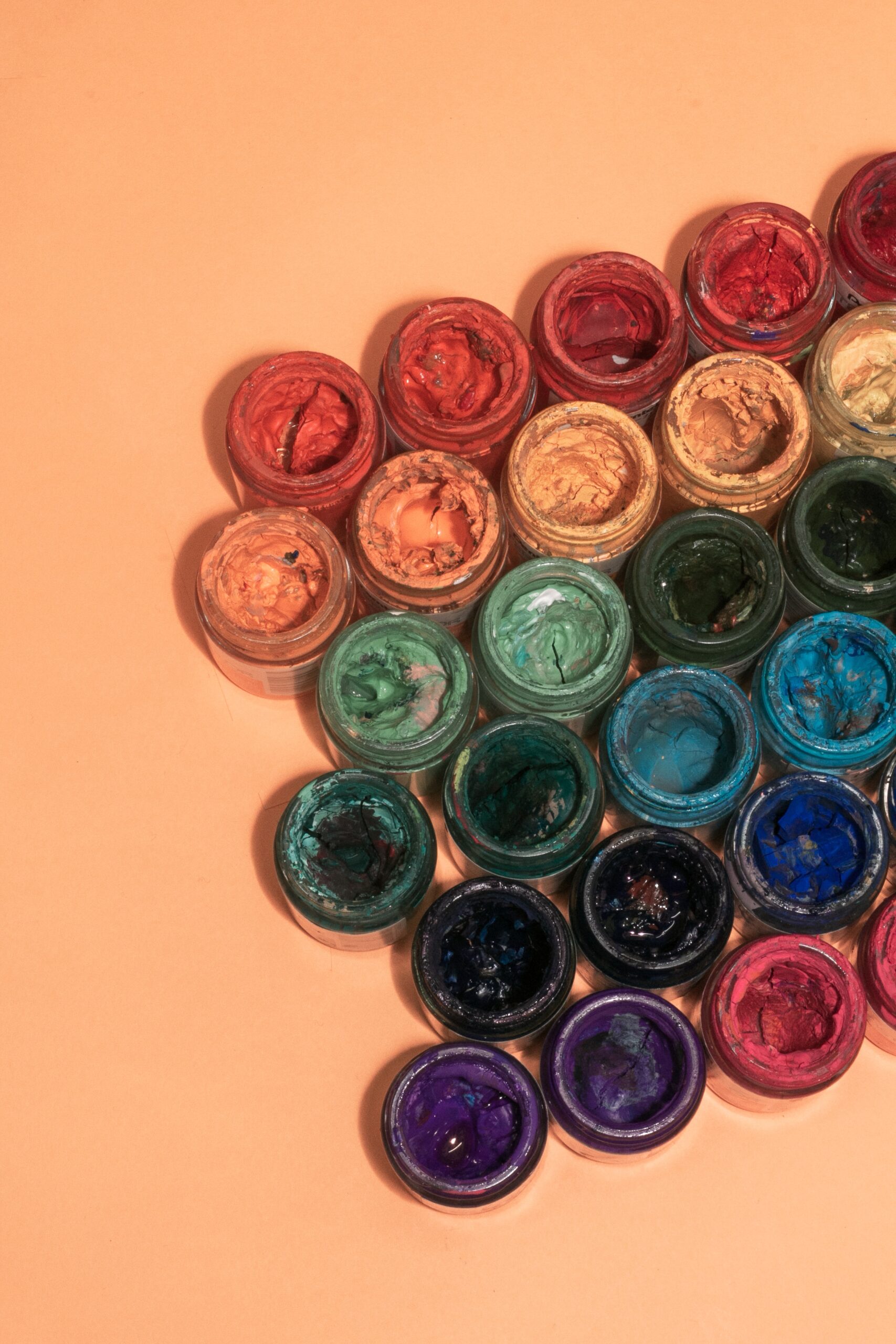Acrylic paint, renowned for its versatility and vibrant colors, is a popular choice for various art projects. However, have you ever wondered if it can also be used to paint walls? In this article, we will explore the possibilities of using acrylic paint for wall painting. We will delve into its benefits, potential drawbacks, and the necessary considerations to achieve a professional and long-lasting finish. By the end, you will have a clear understanding of whether or not acrylic paint is a suitable option for your next wall painting endeavor.

Materials
To begin your painting project, you will need a few essential materials. These include acrylic paint, paintbrushes, painter’s tape, drop cloths, water, a paint tray, and optionally, primer, a sanding block, and spackle. Acrylic paint is a popular choice for wall painting due to its versatility and vibrant colors. Paintbrushes come in various sizes and types, so be sure to have a selection that suits your needs. Painter’s tape will help you achieve clean lines and protect areas where you don’t want paint. Drop cloths are crucial for covering furniture and floors to prevent any accidental spills or splatters. Water will be necessary for cleaning your brushes and diluting the paint. Priming the wall is optional, but it can provide a smooth surface for the paint to adhere to, especially if you are painting over a darker color. A sanding block and spackle may be needed to repair any damage or imperfections on the wall before painting.
Preparation
Before you begin painting, proper preparation is essential to ensure a successful and professional-looking finish. Firstly, clean the wall to remove any dust, dirt, or grease. This can be done using a mild detergent and water or a TSP (trisodium phosphate) solution. Next, inspect the wall for any damage, such as holes, cracks, or uneven surfaces. Repair these using spackle, applying a thin layer over the damaged area and smoothing it with a putty knife. Allow the spackle to dry completely before moving on. Applying painter’s tape along the edges of the wall, baseboards, and any other areas you want to protect will help create sharp lines and avoid accidental paint smudges. Finally, cover the floor and furniture with drop cloths to prevent any paint splatters or spills from causing damage.
Choosing the Right Paint
Selecting the appropriate acrylic paint for your wall is crucial to achieve the desired results. When choosing paint, consider the finish you want. Acrylic paint typically comes in different finishes, including matte, satin, and glossy. Matte finishes have a flat, non-reflective appearance, while glossy finishes provide a shiny, reflective surface. Satin finishes fall somewhere in between, offering a subtle sheen. Pick the finish that best suits the overall look and feel you want for your space. Additionally, consider the quantity of paint needed to cover your wall. Measure the area to be painted and consult the paint can to determine the coverage per gallon or liter. Purchasing the right quantity of paint will ensure you have enough to complete the job without running out or wasting excess.
Painting Techniques
Before you start painting the wall, familiarize yourself with some key painting techniques that will help you achieve the best results. mixing and diluting the paint may be necessary, especially if you want to create a specific color or achieve a translucent effect. Use a paint tray and gradually add water while stirring until you reach the desired consistency. Stirring the paint thoroughly helps ensure an even distribution of pigments and mediums, resulting in a consistent color throughout your project. When applying the base coat, use a wide, flat brush or a roller for larger surfaces. Start from the top of the wall and work your way down in small sections to avoid streaks and drips. To create texture and add depth to your painting, experiment with different brushes. Use brushes with stiff bristles for a rougher texture or soft brushes for a smoother finish. Layering and blending colors can be achieved by applying multiple thin coats of paint with different brushes or using a technique called “wet-on-wet,” where wet paint is applied on top of another wet layer. If you want to create special effects, you can also add additives to your paint, such as retarders to extend drying time or mediums for a glossy or matte finish.

Painting the Wall
Now that you are familiar with the painting techniques, it’s time to start painting the wall. Begin by starting from the top of the wall and working your way down to ensure even coverage. Working in small sections allows you to maintain control and minimizes the risk of the paint drying too quickly. Apply consistent pressure to the brush or roller for an even coat of paint. Keep your strokes in one direction for a seamless finish, and overlap each stroke slightly to avoid visible lines. Allow each layer of paint to dry completely before applying additional coats. This will help achieve a more uniform and durable finish. Depending on the color and coverage desired, you may need to apply multiple coats to achieve the desired result. Once the paint has dried, gently remove the painter’s tape at a 45-degree angle to ensure clean lines. Removing the tape too quickly may cause the paint to peel, while leaving it on for too long may result in the tape sticking to the wall.
Finishing Touches
After painting the wall, inspect it carefully for any touch-ups that may be required. Look for areas with uneven coverage or missed spots. Use a small brush or roller to touch up these areas with paint as needed. If you encounter any spills or mistakes, clean them up promptly to prevent them from drying and becoming difficult to remove. Use a damp cloth or sponge and gently blot the affected area, being careful not to smudge the surrounding paint. Once you are satisfied with the paint job, you can choose to seal the painted surface with a clear sealer or varnish for added protection and longevity. This step is optional but can help preserve the finish of the paint and make it easier to clean in the future.

Caring for Acrylic Painted Walls
To maintain the appearance of your acrylic painted walls, it’s important to follow some care instructions. Avoid using abrasive cleaners, as they can scratch or dull the paint surface. Instead, gently clean the walls with a soft cloth or sponge and mild soap and water. Harsh chemicals should be avoided, as they can damage the paint. Additionally, prevent excessive exposure to moisture or heat, as acrylic paint may be susceptible to fading or discoloration under these conditions. If you notice any scratches or chips on the paint surface, touch them up promptly to prevent further damage. Keep a small amount of the leftover paint for future touch-ups, ensuring that the color remains consistent over time.
Advantages of Acrylic Paint on Walls
using acrylic paint on walls offers several advantages. One of the key benefits is the quick drying time of acrylic paint. Unlike oil-based paint, acrylic paint dries relatively fast, allowing for faster completion of your painting project. Acrylic paint also offers a wide range of colors to choose from, allowing you to achieve the exact shade or hue you desire. Furthermore, acrylic paint is known for its long-lasting durability, resisting fading, cracking, and peeling over time. Lastly, acrylic paint is easy to prepare and clean up. It can be diluted with water, making it easy to achieve the desired consistency, and brushes and trays can be cleaned with water, eliminating the need for harsh solvents or thinners.

Disadvantages of Acrylic Paint on Walls
While acrylic paint has its advantages, it’s important to consider some of its limitations as well. One limitation is the limited ability of acrylic paint to cover dark or bold colors. In some cases, additional coats or a primer may be required to achieve full coverage. Over time, acrylic paint may also experience color shifting, especially when exposed to sunlight or artificial light sources. This can result in slight changes to the paint’s color or tone. Additionally, acrylic paint can show brush or roller marks more prominently than other types of paint, as it dries quickly and does not self-level as easily. Lastly, acrylic paint may have limited options for achieving different sheen levels. Unlike some other types of paint, acrylic paint primarily offers matte, satin, or glossy finishes.
Considerations and Tips
When painting a wall with acrylic paint, there are a few considerations and tips to keep in mind. Before painting the entire wall, it’s always a good idea to test the paint on a small area, especially if you are unsure about the color or finish. This will give you an idea of how the paint will look once it’s fully dry. Additionally, it’s important to follow the manufacturer’s instructions on the paint can regarding mixing ratios, drying times, and cleanup. Proper ventilation is crucial when working with acrylic paint, as it can emit fumes. Ensure you have adequate airflow and consider opening windows or using fans to dissipate any odors. It’s also essential to protect yourself during the painting process. Wear gloves to avoid contact with the paint and goggles to protect your eyes from any splatters or drips. Lastly, if you have leftover paint after completing your project, save it for future touch-ups. This will ensure that you have a matching color when needed and prevent the need to purchase additional paint.
In conclusion, painting a wall with acrylic paint is an excellent way to transform a space and add your personal touch. With the right materials, proper preparation, and knowledge of appropriate techniques, you can achieve a professional-looking finish. Consider the advantages and disadvantages of acrylic paint, and follow the care instructions to ensure the longevity and appearance of your painted walls. By taking these considerations and tips into account, you can confidently embark on your acrylic painting project and enjoy the beautiful results for years to come.




